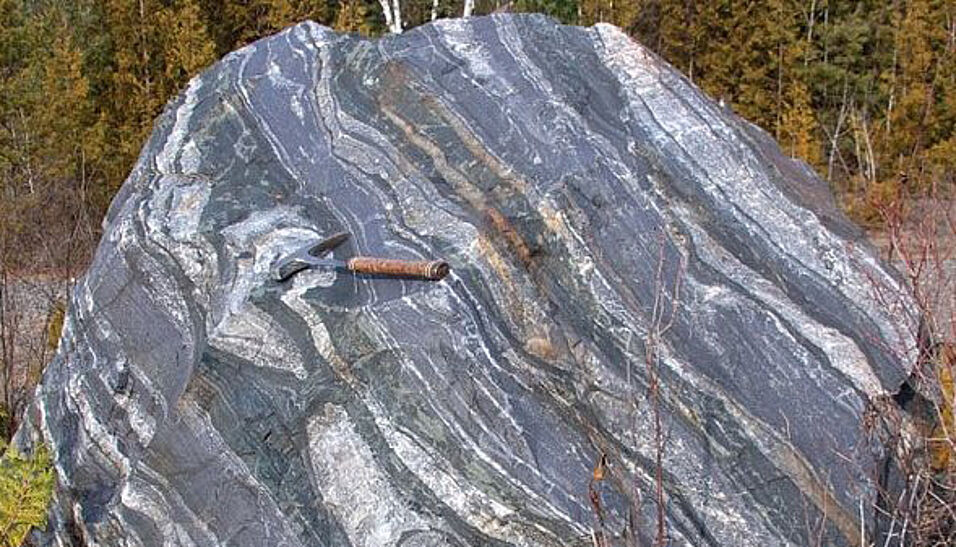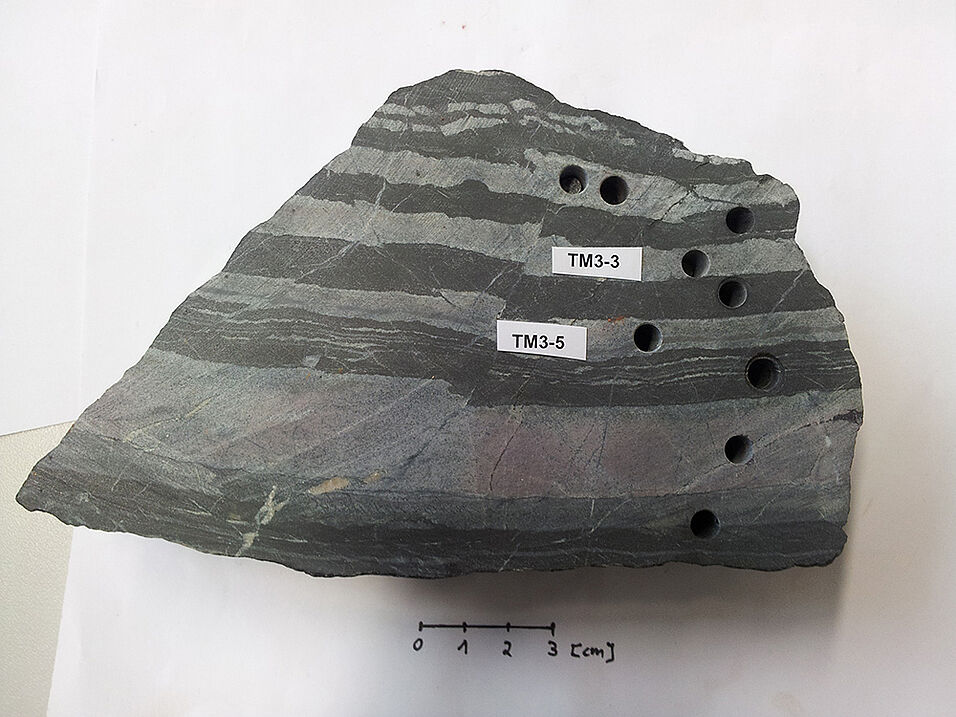In order to investigate how the Earth's mantle developed in the early Earth period, the short-lived 182Hafnium-182Tungsten isotope system has been in focus before: 182Tungsten (182W) indicates, among other things, how much the Earth was exposed to intense meteorite impacts towards the end of its formation and how quickly Earth's mantle mixed and homogenized with these meteoritic components throughout Earth’s history.
Until now, magmatic rocks from different relicts of ancient continents - for example, Australia or South Africa - had to be studied for these isotopes. "However, such samples are scarce, and it is unclear whether isotope compositions of individual magmatic rocks are truly representative signatures of the Earth's global evolution or merely reflect local effects," explains the isotope geochemist Andrea Mundl-Petermeier of the University of Vienna.
Together with Sebastian Viehmann, also a researcher at the Department of Lithospheric Research at the University of Vienna and colleagues at the University of Cologne and Jacobs University Bremen, she has now discovered a new geochemical archive and published it in the journal Nature Communications: tungsten isotope signatures in banded iron formations (BIFs), which formed predominantly during the Precambrian, i.e. between 3.8 billion and about 540 million years ago.
Evolution of the Earth's mantle and the continents
Using the 2.7 billion-year-old iron formation from the Temagami greenstone belt in Canada, the team was able to reconstruct that both iron- and silica-rich layers of the BIF deposited from seawater provide information on the evolution of the Earth's mantle and crust, respectively. "In the bright quartz layers, there is evidence for weathered solutions of the emerged continents; in the dark iron layers, on the other hand, there are traces of submarine hot-hydrothermal solutions from systems similar to today's 'black smokers' at mid-ocean ridges," Viehmann says.
Using state-of-the-art instruments from the GeoCosmoChronology group and the new Geoscience Solid State Mass Spectrometry (GeoIsotopes) Core Facility at the Department of Lithospheric Research, the research team was able to reveal differences in the isotopic composition between the two layers. "Both the iron-rich and quartz-rich bands show the 182W enrichments typical of this time, but with the help of high-precision measurement methods, significant differences could be resolved," Mundl-Petermeier says. "We were able to demonstrate that the banded iron formations can be used to trace the geodynamic evolution of both the mantle and the continents within a single sample."
From a seawater perspective
The new approach now tackles the long-standing questions regarding Earth’s mantle and crust evolution from seawater perspective: Banded iron ores are formed by chemical deposition from the ocean. "The BIFs from the Temagami area directly represent ambient seawater chemistry 2.7 billion years ago," explains geologist Sebastian Viehmann: "We are looking at the Earth at that time from the perspective of the ocean."
On the one hand, this seawater perspective has the advantage that in the future the researchers will not have to use several - potentially heavily altered - samples of magmatic rock, but can use iron formations, representing global marine chemistry: "Since tungsten had a relatively long residence time in the ocean 2.7 billion years ago, this 182W signature of the quartz layers reflects a geochemical average of all land masses available for weathering at that time" explains Mundl-Petermeier.
The iron-rich layers, on the other hand, record the composition of the Earth's mantle through deposits from hydrothermal systems. With this new approach, the researchers hope to gain detailed insights into the very early evolution of the Earth. Among other things, new information can be gained about how long it took for the Earth's mantle to be completely mixed. "The last 0.5 percent or so of the Earth's mass was added in the form of meteorites - but how long it took for these meteoritic components to completely mix with and homogenise the mantle is still unclear - but we can track this with the help of the 182W signature," Viehmann says.
"Our study thus shows that banded iron formations represent unique archives for 182W - they are a mirror for the evolution of early Earth, in which we can simultaneously track the evolution and interplay between the Earth's mantle and continents. We aim to use this new archive to better understand Earth's geodynamic evolution during the Precambrian in future studies," says Mundl-Petermeier.
Publication
- A. Mundl-Petermeier, S. Viehmann, J. Tusch, M. Bau, F. Kurzweil, C. Münker (2022): Earth’s geodynamic evolution constrained by 182W in Archean seawater. In: Nature Communications; DOI: 10.1038/s41467-022-30423-3




